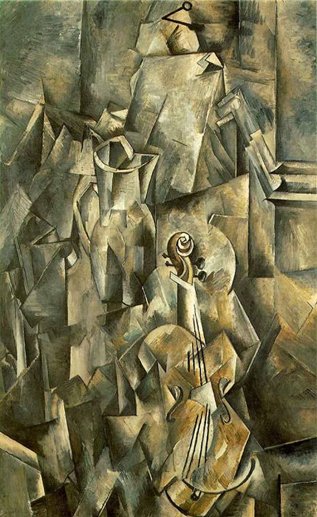Andrew Graham-Dixon reviews 'Picasso and Braque: Pioneering Cubism' at the Museum of Modern Art, New York
IT IS a peculiar fact that while virtually everybody has a rough idea of what Cubism was, and of what a Cubist painting looks like, hardly anyone can name an example. That turns out to be a strangely appropriate state of affairs, and it also strengthens the case for an exhibition such as 'Picasso and Braque: Pioneering Cubism', at New York's Museum of Modern Art, which gathers together more than 350 paintings, sculptures, collages and papiers colles produced by Braque and Picasso between 1907 and 1914. Cubism, which de-veloped with the irresistible momentum of a great philosophical argument, is well suited by such blanket coverage. It was never about this or that masterpiece (although it produced many), but about changing the way we see the world.
For Picasso and Braque, Cubism was also a way of life, an adventure, and the miracle of it is that the excitement of that adventure has not been dulled by the passage of time. It has been dulled by the carving up of the Cubist oeuvre among private collectors and museums. Curator William Rubin has managed, for a brief, extraordinary moment, to set Cubism's shattered bones, to restore it to something like wholeness. At MOMA, until January, the jigsaw puzzle comes together; all those small, mostly monochrome canvases that museum visitors tend to hurry past ('Oh, Cubism') come to life.
Cubism began, as this exhibition begins, with the savage outburst that was Picasso's Demoiselles d'Avignon. It is one of the great masterpieces of world art, but that is not to say that it has become respect-able. Its savagery survives intact: those five harpies still fix you with basilisk stares, a glowering parade of accusatory whores (Picasso's original title...


